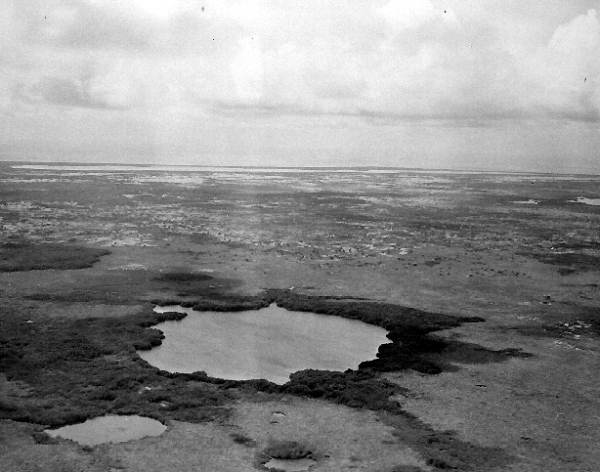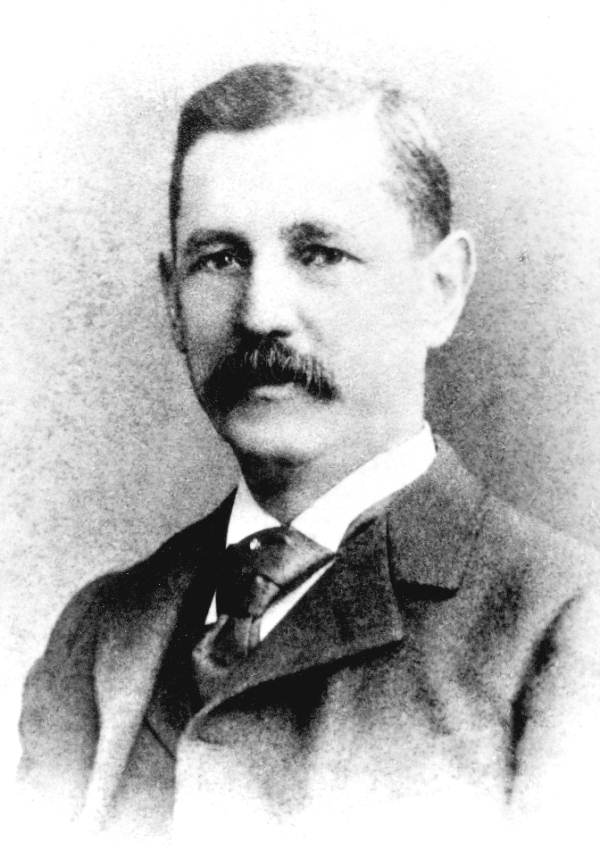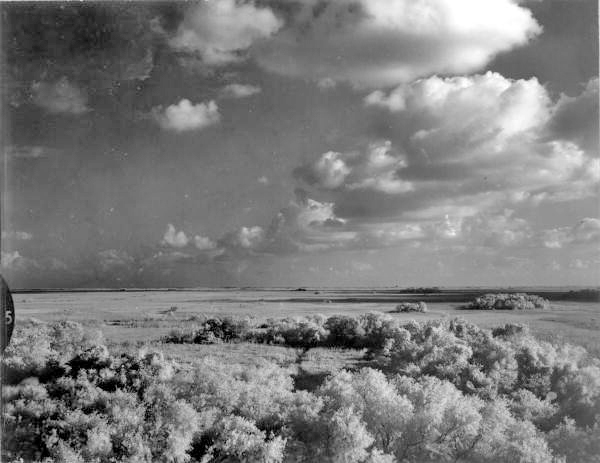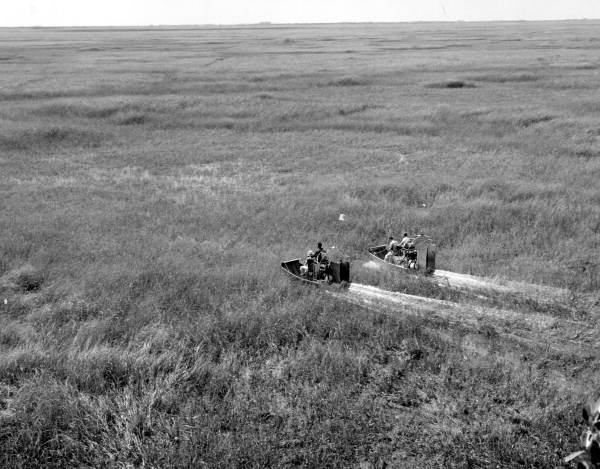Description of previous item
Description of next item
Exploring the Everglades
Published July 7, 2016 by Florida Memory
Today, Florida’s Everglades are a popular destination for visitors and sportsmen. This vast “river of grass” is host to agricultural areas and numerous canals, as well as a national park. However, this was not always so. There was a time when the Everglades were a wild and remote region. Until the 1880s, some people even compared the Everglades to the interior of Africa, which was then an almost completely unknown part of the world.
Despite their mystery, there were many in the United States who believed that the Everglades could eventually be completely drained. With such an effort, the Everglades could potentially become thousands of square miles of new land on which Florida could grow. The promise of the enormous profits such an undertaking could generate was hard to ignore, and people from all over the United States became involved. So great was said promise that the Times-Democrat, a newspaper out of New Orleans, resolved to not only fund but also send a man to lead two expeditions through the Everglades. The Times-Democrat party became the first recorded group to successfully traverse the Everglades from north to south.
The story begins with Hamilton Disston, the Disston Land Company, and Florida’s Internal Improvement Fund. The IIF was established in 1851 for the purpose of encouraging the further development of Florida. However, its resources were not exclusively for the development of the Everglades, and by the early 1880s, its obligations to various groups and projects all over the state had exceeded its means. The IIF needed money. Thus, the state resolved to sell more than four million acres of swampland, much of it in the Everglades, to the Disston Land company. As a condition of the sale, Disston was required to begin draining the land himself. Once reclaimed, Disston and many others like him believed that the Everglades could become extraordinarily fertile farmland. Sales of this land, therefore, could have made him fantastically wealthy. (For more, see our blog post: “Land by the Gallon”)
Meanwhile, the Times-Democrat had long been predicting that the South was poised for a massive development boom following Reconstruction, especially concerning the conversion of wetlands into productive farms. Though it primarily served New Orleans, the Times-Democrat boasted readership all over the South. While it had no real ties to Disston himself, the newspaper saw that he owned – and was obligated to reclaim – lands which could help to make their prophecy come true. Consequently, the newspaper organized two expeditions into the Everglades, the first in 1882 and the second the following year. These expeditions would investigate the feasibility of draining the region and also determine what sort of plants might eventually grow best there. The group included an experienced engineer and surveyor who could document their findings, as well as determine the best route for a telegraph line through the region at the request of the Western Union Company.
Though several military parties had crossed the Everglades during the Seminole Wars, these had all run between east and west. The Times–Democrat, therefore, proposed to attempt a route running from north to south, which promised many exciting new discoveries. Furthermore, it would make a very exciting series of reports for their readership to enjoy. The expedition would be led by Major Archie P. Williams, who was the newspaper’s correspondent, and crewed by able and experienced men from the area.
The expedition proceeded in two stages. In 1882, they traveled south along the Kissimmee River, into Lake Okeechobee, and then made their way west along the Caloosahatchee River, towards Fort Myers. The following year, the group retraced its route eastward into Okeechobee, and then turned south into the Everglades proper, aiming to reach the mouth of the Shark River. All told, the journey was more than 400 miles. Much of it went deep through the uncharted Everglades.
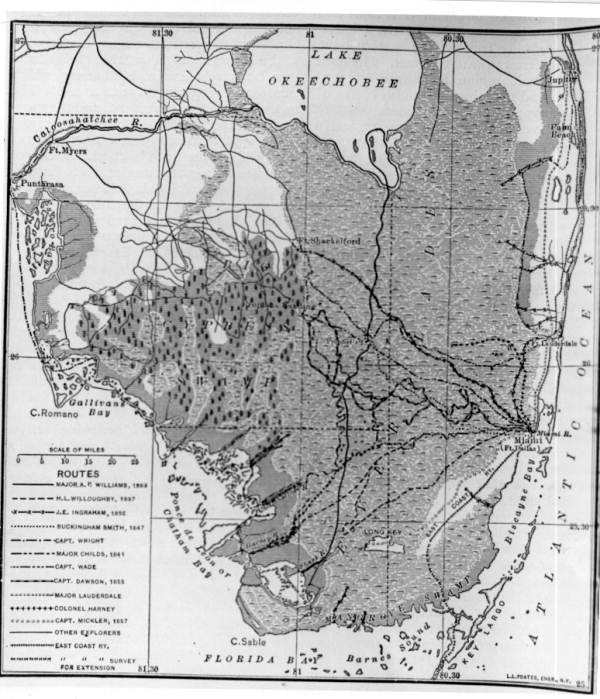
A map showing routes taken across the Everglades. Note Major Williams’ 1883 route marked by a solid black line running north to south.
The expedition, composed of both white and African-American men, endured many hardships on their journey south. The February 23, 1883 edition of the Times-Democrat, for example, contains a report of a nighttime invasion of the party’s camp by alligators. A well-timed gust of wind stoked the dying fire, and the light revealed that the ground was “one moving mass of the reptiles.” Perhaps a few stories were exaggerated for the readers, but that does not diminish the group’s efforts. Often, they found the water so shallow and the mud so deep that they were obliged to push their boats along from behind while sinking themselves in the swamp. Some days would only see a few miles of hard won progress; cutting a path through the seemingly endless sawgrass. They faced inclement weather in small boats, and swarms of mosquitoes. The group also feared potentially hostile encounters with the Native Americans who still inhabited the area, though their concerns proved baseless.
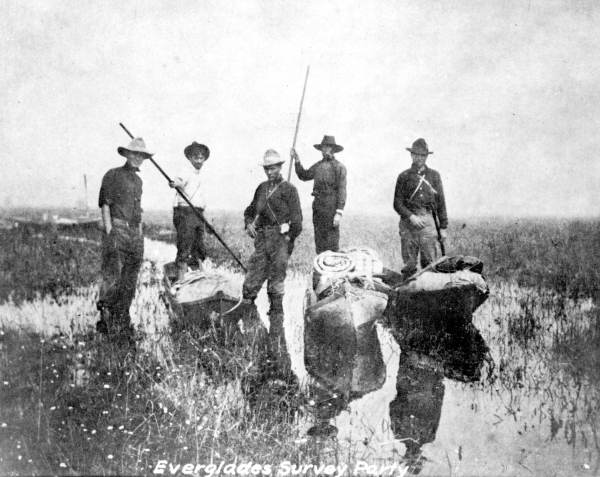
A 1913 Everglades survey party. Though smaller in number, their equipment is similar to what the Times-Democrat expedition would have been outfitted with. You can see a somewhat larger boat in the background, fitted with a mast for a small sail.
While their trip through the Everglades was difficult, the Times-Democrat party did reach the Shark River. When they reached the end of the “river of grass,” they determined that, based on their experiences, any drainage project in the Everglades was destined to end in failure. They also judged that a telegraph line was not feasible, for even if the line could be laid, accessing it for maintenance would mean regular repeats of their own arduous journey. Major Williams and his men thought that the Everglades “must remain a swamp forever.”
On this count, the Times-Democrat men were only partially right. Mr. Disston’s plan to “redeem” the Everglades never came to complete fruition. Though some parts were drained in the twentieth century, much of the area is still swampland save for the natural islands, or hammocks, which occasionally rise up from the sawgrass. Though the dry and fertile farmlands never materialized, accessibility has greatly improved. A network of flood control canals and nature trails cross parts of the Everglades, as well as the famous “Alligator Alley” highway. Travelers through the Everglades certainly have a much easier time of it than dragging their boats through the muck. If you ever find yourself in the Everglades, take a moment to remember Major Archie Williams, his crew of intrepid Floridians, and their journey into the unknown.
Cite This Article
Chicago Manual of Style
(17th Edition)Florida Memory. "Exploring the Everglades." Floridiana, 2016. https://www.floridamemory.com/items/show/321986.
MLA
(9th Edition)Florida Memory. "Exploring the Everglades." Floridiana, 2016, https://www.floridamemory.com/items/show/321986. Accessed December 29, 2025.
APA
(7th Edition)Florida Memory. (2016, July 7). Exploring the Everglades. Floridiana. Retrieved from https://www.floridamemory.com/items/show/321986

 Listen: The Folk Program
Listen: The Folk Program